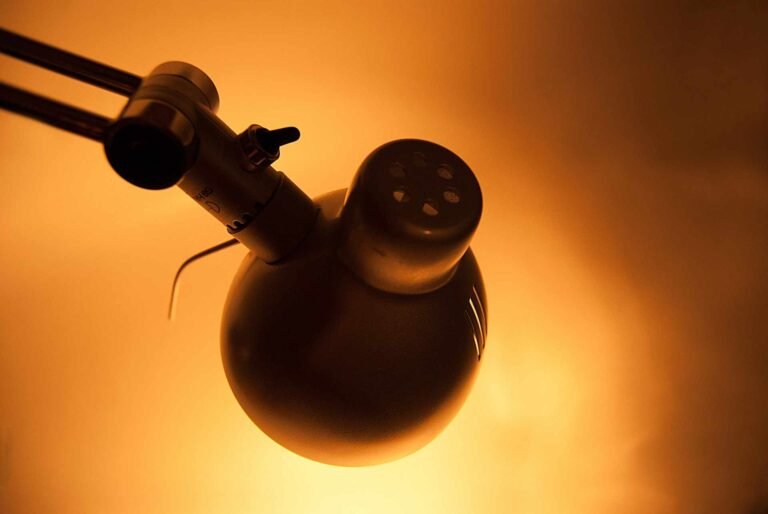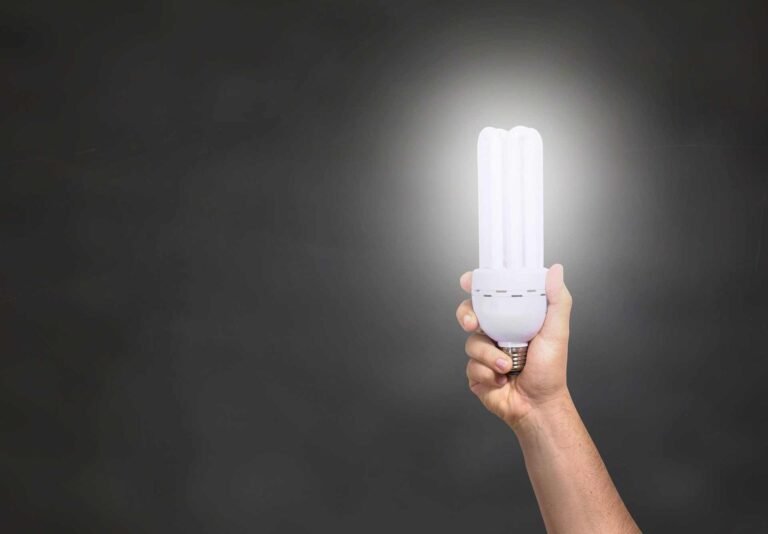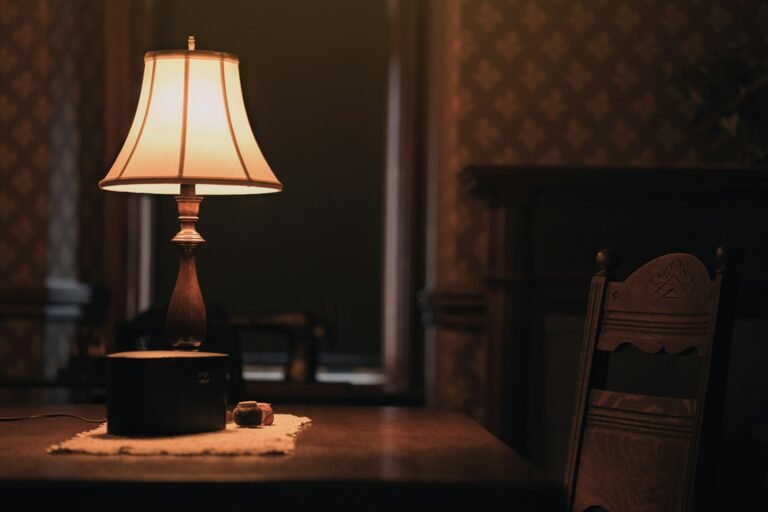How to Position Your Desk Lamp for Maximum Productivity and Comfort
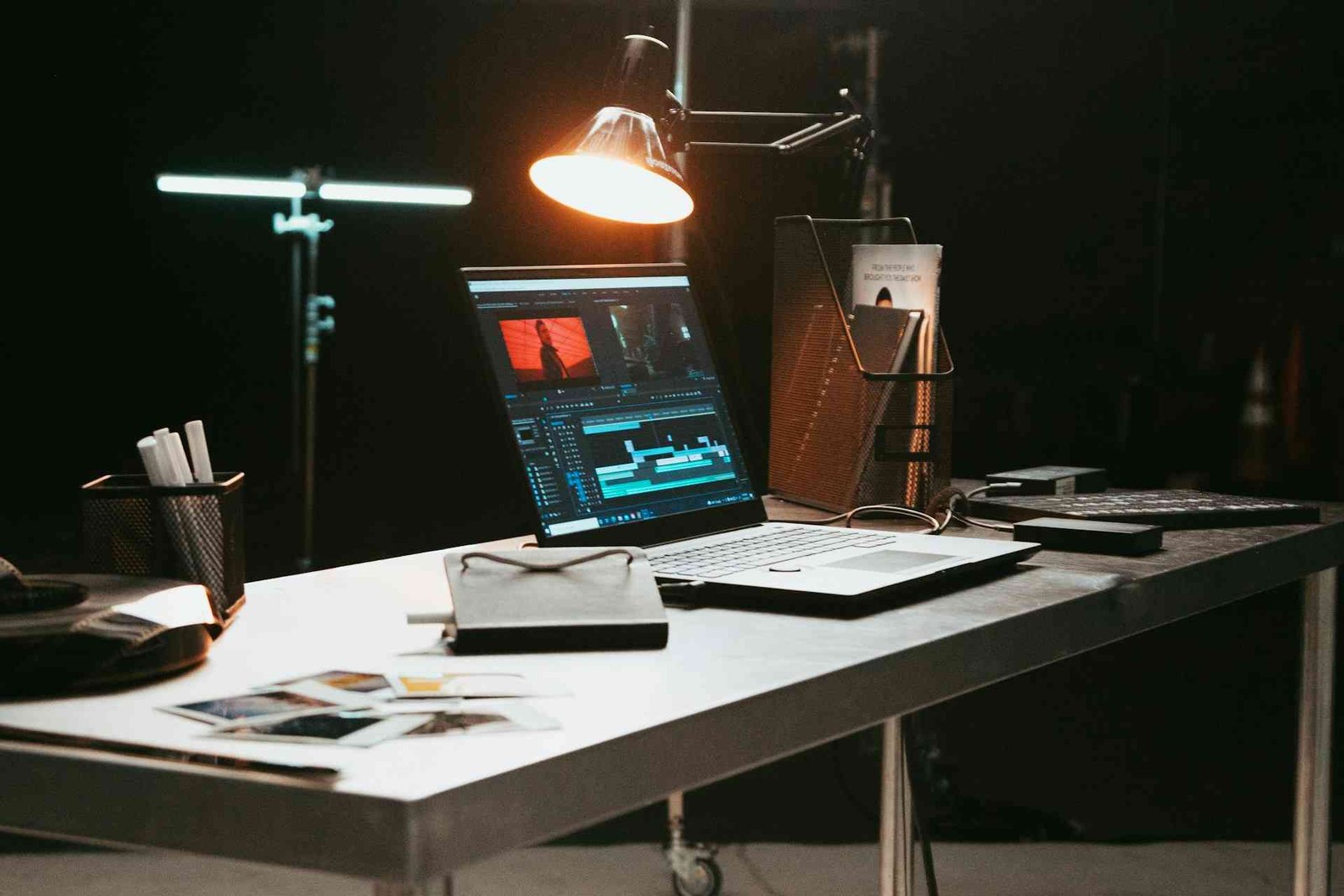
Getting your workspace lighting just right can feel like solving a puzzle, especially when that afternoon glare hits your screen or you’re squinting at documents under harsh overhead lights. We’ve all been there, adjusting our desk lamp for the hundredth time, wondering if there’s actually a science to this whole lighting thing. Spoiler alert: there absolutely is, and once you nail the best position for desk lamp placement, your productivity (and your eyes) will thank you.
Whether you’re setting up a home office, upgrading your study space, or just tired of working in lighting that makes you feel like you’re in a cave, understanding proper desk lamp positioning can transform your entire work experience. Let’s dive into everything you need to know about creating the perfect lighting setup that actually works with you, not against you.
Why Desk Lamp Position Actually Matters More Than You Think
Your desk lamp isn’t just there to look pretty (though we’re sure yours does). The position of your desk lamp directly impacts everything from eye strain and headaches to your ability to focus and stay alert throughout the day. Poor lighting placement can create shadows exactly where you need to see clearly, cause glare that makes computer work impossible, or leave you constantly adjusting your posture to find the right angle.
Think about it: when your lighting works against you, you’re constantly fighting to see properly. Your eyes work overtime, your neck cranes at weird angles, and before you know it, you’re dealing with fatigue that has nothing to do with your actual workload. The right desk lamp placement eliminates these issues entirely, creating a workspace that supports your natural work flow instead of hindering it.
The Golden Rules of Desk Lamp Placement
The Side Light Strategy
The most effective desk lamp position follows what lighting experts call the “side light rule.” For right-handed people, place your lamp on the left side of your workspace, and vice versa for lefties. This prevents your writing hand from casting shadows across your work surface, which is probably one of the most frustrating lighting issues you can encounter.
When implementing this desk lamp positioning technique, aim for a 45-degree angle from your dominant hand. This creates even illumination across your work surface without creating harsh contrasts or shadows that strain your eyes.
Height and Distance Considerations
The sweet spot for desk lamp height typically falls between 15 to 27 inches above your work surface, depending on the type of tasks you’re doing. For detailed work like reading or writing, you’ll want the light source closer to the lower end of that range. For general computer work, the higher positioning often works better.
Distance-wise, your lamp should be positioned about arm’s length away from your primary work area. This provides adequate coverage without creating hot spots or overly intense lighting in one area while leaving other parts of your desk in shadow.
Task-Specific Positioning: Finding Your Perfect Setup
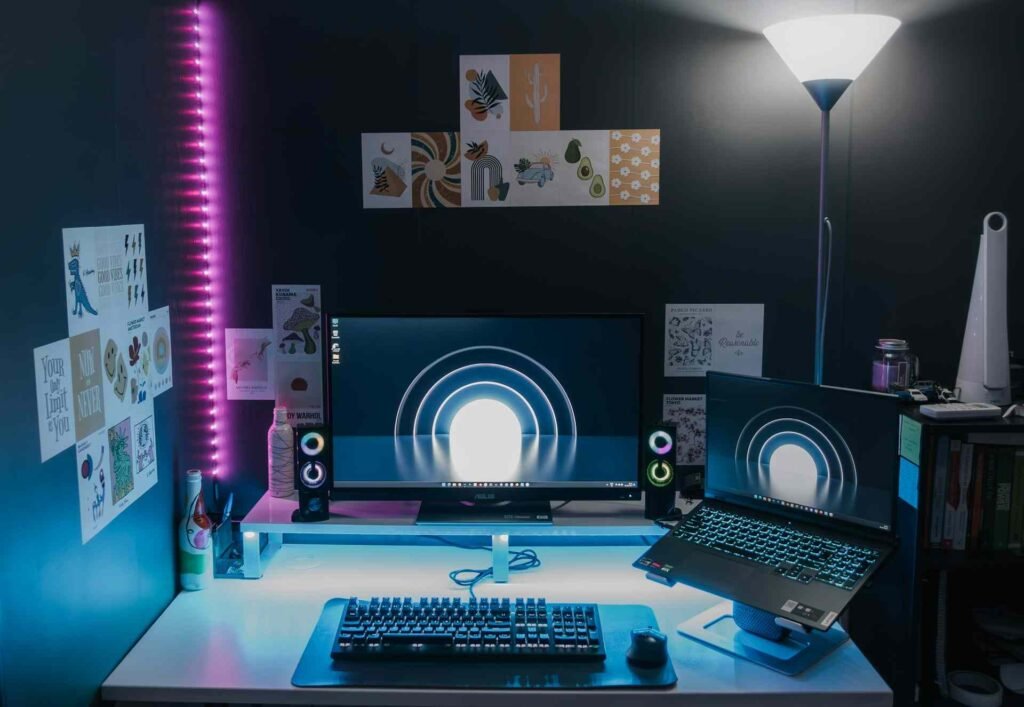
Computer Work and Screen Time
When your primary focus is computer work, the best position of study lamps (or any desk lamp) becomes slightly more nuanced. You want to avoid any direct light hitting your screen, which creates glare and forces your eyes to constantly adjust between bright and dark areas.
Position your lamp to the side of your monitor, angled slightly away from the screen surface. This provides ambient lighting that reduces the contrast between your bright screen and darker surroundings without creating reflection issues. Many people make the mistake of positioning their lamp directly behind their monitor, which can create a halo effect that’s actually more straining than helpful.
For dual monitor setups, consider using two smaller lamps or one lamp with a wider beam angle positioned centrally behind your monitors, angled upward to bounce light off the wall or ceiling.
Reading and Writing Tasks
Traditional desk work like reading documents, writing notes, or working with physical materials requires more direct task lighting. How should a desk lamp be positioned for these activities? The lamp should provide focused light directly onto your work surface from the non-dominant side.
Proper lighting setup can make the difference between comfortable extended reading sessions and eye strain headaches. The key is ensuring the light comes from above and slightly to the side, mimicking natural daylight patterns that our eyes are naturally adapted to handle.
Creative and Detailed Work
For activities like drawing, crafting, or any detailed manual work, you might need to adjust your standard desk lamp placement. These tasks often benefit from multiple light sources or adjustable positioning that can change based on the specific project you’re working on.
Consider lamps with flexible arms or adjustable heads that allow you to direct light exactly where you need it. The ability to modify your lighting setup based on the task at hand is invaluable for creative work.
Common Desk Lamp Positioning Mistakes (And How to Fix Them)
The Overhead Trap
One of the most common mistakes is relying solely on overhead lighting and treating your desk lamp as supplementary. Overhead lights create shadows under documents, cast shadows from your hands, and often provide uneven illumination across your workspace.
Your desk lamp should be the primary light source for task work, with overhead lighting serving as ambient background illumination. This reversal of roles often surprises people, but it creates much more effective and comfortable working conditions.
The Glare Game
Another frequent error is positioning your lamp where it creates glare on your computer screen or reflects off glossy surfaces. This typically happens when people place their lamp directly in front of their workspace or use lighting that’s too intense for the distance.
Managing monitor glare becomes easier when you understand that the issue isn’t usually the lamp itself, but rather its position relative to reflective surfaces in your workspace.
The Shadow Dance
Creating shadows exactly where you need to see clearly is perhaps the most frustrating lighting mistake. This usually occurs when the lamp is positioned on the same side as your dominant hand or when the light source is too low relative to your work surface.
Light Temperature and Intensity: The Supporting Cast
While position is crucial, the type of light your lamp produces also plays a significant role in your overall workspace comfort. Cooler light temperatures (around 4000K to 6500K) are excellent for focus and alertness during daytime work, while warmer temperatures (2700K to 3000K) are better for evening work or when you want to reduce eye strain.
Adjustable lighting solutions offer the flexibility to change both intensity and temperature based on your current needs, time of day, and type of work you’re doing.
Many modern desk lamps include dimming capabilities and color temperature adjustment, allowing you to fine-tune your lighting throughout the day. This adaptability can significantly improve your comfort and productivity across different tasks and times.
Desk Lamp Positioning for Different Workspace Layouts
| Workspace Type | Lamp Position | Key Considerations | Recommendation (Amazon) |
|---|---|---|---|
| Standard Desk | Left side (right-handed users) | Avoid shadows from writing hand | LEPOWER Desk Lamp |
| L-Shaped Desk | Corner positioning | Cover both work surfaces evenly | Motumen Led Desk Lamp |
| Standing Desk | Higher placement (adjustable height) | Account for changing user height | Kary LED Desk Lamp |
| Shared Workspace | Multiple smaller lamps | Individual control without interference | Airlonv LED Desk Lamp |
| Minimal Desk | Clamp or wall-mounted | Preserve valuable surface space | Airlonv LED Desk Lamp |
Small Space Solutions
In compact workspaces, traditional desk lamp positioning might not be feasible. Wall-mounted swing-arm lamps, clamp-on fixtures, or space-saving lighting options can provide the same positioning benefits without consuming precious desk real estate.
The key is maintaining the same principles: avoid shadows, prevent glare, and ensure adequate illumination of your primary work area, regardless of how you achieve it.
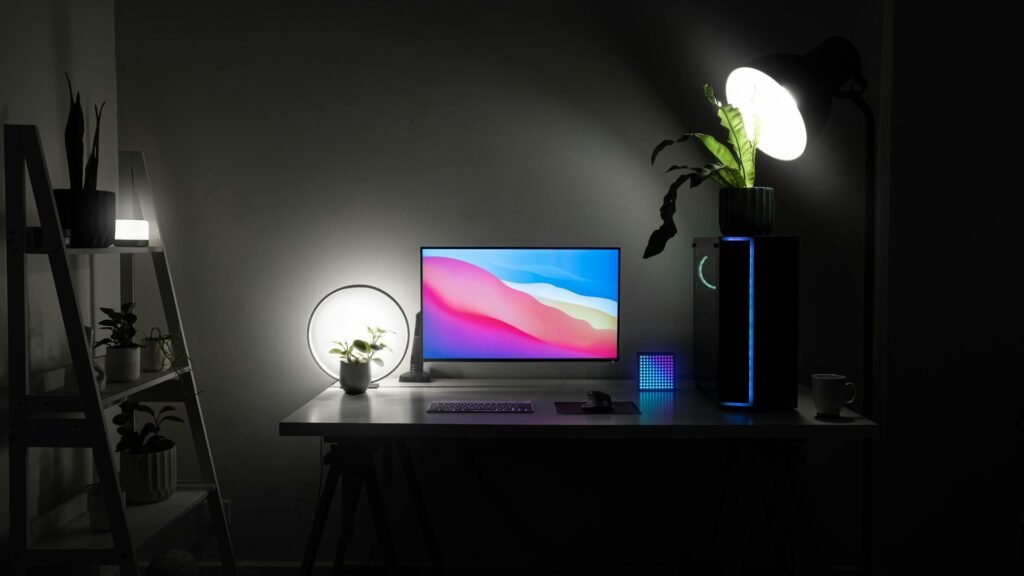
Multi-Purpose Spaces
When your workspace doubles as a dining table, craft area, or general living space, adjustable positioning becomes even more important. Look for lamps that can easily be repositioned or stored when not needed for work tasks.
The Tech Integration Factor
Modern workspaces often include multiple devices and connectivity considerations that can influence your lighting setup. USB-powered desk lamps can reduce cord clutter, while smart lamps can be integrated into your overall workspace automation.
Consider how your lighting choices work with your other tech setup. Does your lamp cord interfere with your USB hub setup? Can you position everything for optimal functionality without creating a tangled mess of cables?
Some desk lamps now include built-in charging capabilities, allowing them to serve dual purposes in your workspace while maintaining optimal positioning for lighting.
Frequently Asked Questions
Should a desk lamp be in front or to the side?
A desk lamp should definitely be positioned to the side rather than directly in front of your workspace. Specifically, place it on the opposite side of your dominant hand to prevent shadows while writing or using tools. Front positioning typically creates glare issues with computer screens and can cause eye strain from direct light exposure.
How far should a desk lamp be from your computer screen?
Your desk lamp should be positioned at least 18 to 24 inches away from your computer screen, angled so that no direct light hits the screen surface. The goal is to provide ambient lighting around your screen without creating reflections or glare that make the display harder to read.
What’s the ideal height for desk lamp placement?
The optimal height for most desk lamps is between 15 to 27 inches above your work surface. For detailed tasks like reading or writing, aim for the lower end of this range. For general computer work or when you need broader light distribution, the higher positioning typically works better.
Can I use multiple desk lamps in one workspace?
Absolutely! Multiple lamps can actually provide better, more even lighting than trying to illuminate everything with a single source. Just make sure they’re positioned to complement each other rather than create competing shadows or overly bright spots.
Does the color of my desk surface affect lamp positioning?
Yes, darker surfaces absorb more light and may require closer positioning or higher intensity, while lighter surfaces reflect more light and might need the lamp positioned slightly farther away to prevent glare. Glossy surfaces can also create reflections that influence optimal positioning.
Creating Your Perfect Lighting Setup
Getting the best position for your desk lamp isn’t about following rigid rules, it’s about understanding the principles and adapting them to your specific workspace and needs. Start with the basic guidelines we’ve covered, then fine-tune based on your particular tasks, workspace layout, and personal preferences.
Remember that good lighting is an investment in your comfort, productivity, and long-term eye health. Take the time to experiment with different positions and settings until you find what works best for you. Your future self (and your neck and eyes) will definitely appreciate the effort you put in now to create a workspace that truly supports your best work.
Looking for more? Check out our desk lighting category for more articles and guides that may interest you!
Featured image credit: Photo by Jakob Owens on Unsplash
This content is for informational purposes only. Please verify current information directly on the retailer’s site before purchasing.




